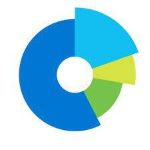CULTURE PRODUCTIVITY OF Daphnia magna FED WITH QUAIL DROPPINGS (Coturnix coturnix)
DOI:
https://doi.org/10.29303/jfh.v3i1.2857Kata Kunci:
Abundance, Daphnia magna, quail manure, water qualityAbstrak
This research aimed to know the effect of quail manure on an abundance of Daphnia magna. The research method for D. magna was a Completely Randomized Design (CRD) with four settings, each repeated four times, namely the use of P0 (Control without fertilizer), P1 (Quail manure fertilize 1 g/L), P2 (Quail manure fertilize 3 g/L), P3 (Quail manure fertilize 5 g/L). D. magna was cultured for 15 days in a container with a volume of 3 liters. The updated parameters were abundance of D. magna, mortality of D. magna, and water quality. The results were analyzed using ANOVA analysis. The results showed that the highest abundance was in P2 (3g / L), and the lowest was in P0 (control). Water quality during the research was temperature 21-24°C, pH 7,5-8,4, DO 6,2-7,8 ppm, and ammonia 0-0,25 mg/L.
Unduhan
Diterbitkan
Terbitan
Bagian
Lisensi
1. The copyright of this journal belongs to the Editorial Board, based on the author's consent, while the moral rights of the publication belong to the author(s).
2. The formal legal aspect of journal accessibility refers to the same Creative Common Attribution + Noncommercial + ShareAlike (CC BY-NC-SA), implying that publication can be used for non-commercial purposes in its original form.
3. Every publication (printed/electronic) is open access for educational, research and library purposes. In addition to the objectives stated above, the editorial board is not responsible for copyright infringement















